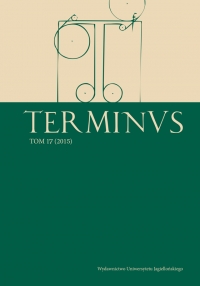Aemulatores erasmi? „Sejmy niewieście” w polskiej kulturze literackiej XVI wieku
Aemulatores Erasmi? „The Council of Women” in Polish Literature of XVI Century
Author(s): Justyna A. KowalikSubject(s): Gender Studies, Cultural history, Customs / Folklore, Gender history, Polish Literature, Sociology of Culture, 16th Century
Published by: Wydawnictwo Uniwersytetu Jagiellońskiego
Keywords: Erasmus of Rotterdam; satire; Senatulus to jest sjem niewieści; Marcin Bielski; „council of women”; dialogue;
Summary/Abstract: The aim of this article is to present how the Polish renaissance authors creatively transformed and adapted to the native context one of Erasmus’ dialogues, Senatulussive Gynaikosynedrion. The humanist exploited here a popular motif of a meeting of women who debate on different issues. Th e work is based on one of Aristophanes’ comedies as well as an episode from a biography of a Roman emperor, Heliogabal. Senatulus was very popular and was translated into a number of vernacular languages all over Europe. Erasmus, with his characteristic sense of humor and criticism, pointed to some vices of women, but did not stop there. He used a seemingly paradoxical formula of women’s council to draw attention to social and political problems of the time. Early modern Polish texts developing the theme in question can be understood in the context of Polish parliamentarism. But their literary inspiration has to be taken into consideration as well. The first part of this article focuses on problematic aspects of Senatulus, its somewhat provocative and ambiguous character, which probably attracted authors to this particular text. Th en two Polish dialogues that are linked to Erasmus’s work are examined. These are: anonymous Senatulus to jest sjemniewieści (Senatulus, or the council of women) from 1543 and Sjem niewieści (The council of women) written by Marcin Bielski in 1566/1567. Even a preliminary comparison of these two works with Erasmus’ colloquium indicates that the vernacular texts are a kind of sequel to the original and further develop its basic idea. References to the Latin version are present here on different levels. Similarity lays not only in the title and topics discussed by the characters, but also in the linguistic structure. In both cases, the concept of the female parliament was used by the writers as a pretext to draw attention to the political, social and economic problems Poland faced at that time and to suggest their own solutions.
Journal: TERMINUS
- Issue Year: 17/2015
- Issue No: 2 (35)
- Page Range: 241-264
- Page Count: 23
- Language: Polish

